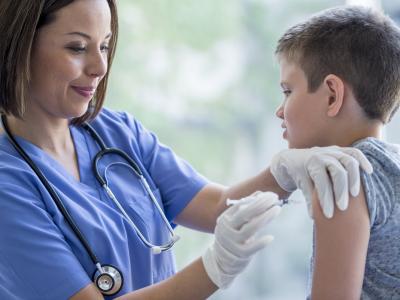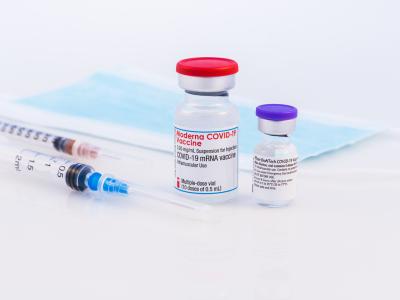IDSA updates guidelines for asymptomatic bacteriuria
The Infectious Diseases Society of America (IDSA) today issued updated guidelines on the management of asymptomatic bacteriuria (ASB) that reinforce previous recommendations to avoid overdiagnosis of urinary tract infection and unnecessary antibiotic treatment.
Its previous guidelines, issued in 2005, recommended that only pregnant women and individuals undergoing an invasive urologic procedure should be screened and treated for ASB—the presence of bacteria in the urine without symptoms of an infections—and that screening and treatment should be avoided in healthy non-pregnant women, the elderly, people with diabetes, and patients with spinal cord injuries. ASB occurs in 3% to 7% of healthy women, 50% of people with spinal cord injuries, and 30% to 50% of nursing home residents.
The new guidelines, published in Clinical Infectious Diseases, add infants and children and people who've had non-urologic surgery, joint replacement, or organ transplants to the list of those who should not be screened or treated for ASB unless they show signs of an infection.
"Screening these patients is far too common and leads to the inappropriate prescribing of antibiotics, which some studies suggest may actually increase the risk of a UTI, as well as contribute to other serious infections such as Clostridioides difficile," Lindsay Nicolle, MD, FIDSA, chair of the committee that developed the guidelines, said in an IDSA press release. "Generally, physicians should not obtain urine cultures unless patients have symptoms consistent with an infection, such as burning during urination, frequent urination or abdominal pain or tenderness on the back near the lower ribs."
Since the publication of the 2005 guidelines, antibiotic stewardship programs have identified ASB as important contributor to inappropriate antibiotic use.
Mar 21 Clin Infect Dis paper
Mar 21 IDSA press release
Study finds drug-resistant bacteria in English wastewater treatment plants
An epidemiologic and genomic analysis of wastewater in England has found widespread dissemination of hospital-adapted lineages of antibiotic-resistant Enterococcus faecium, a team of researchers reported today in Genome Research.
The researchers began by collecting treated and untreated wastewater from 20 wastewater treatment plants in the East of England and culturing the samples for E faecium, ampicillin-resisant E faecium (AREfm), and vancomycin-resistant E faecium (VREfm), which is a leading cause of healthcare-associated infections. They found AREfm and VREfm in all 20 samples of untreated water, and in 18 and 17 treated samples, respectively. The only negative samples were from plants that used terminal ultraviolet light contamination.
The bacterial counts of AREfm and VREfm were significantly higher in the 10 treatment plants that received wastewater from hospitals.
The researchers then compared the genomes of 423 E faecium isolates from the wastewater plants with 187 E faecium isolates associated with bloodstream infections diagnosed in patients in the East of England from 2010 through 2016. That comparison revealed that the resistant E faecium isolates were in two major lineages, the hospital-adapted clade A1 and the animal-associated clade A2, with AREfm residing in A1 and A2 and VREfm exclusive to A1.
Among the 481 isolates in clade A1, the researchers observed genetic intermixing between wastewater and bloodstream infection, with highly related isolates shared between a major teaching hospital and 9 of the 20 treatment plants. They also found that 23 of 28 detected antibiotic, metal, and biocide resistance genes were represented in bloodstream, hospital sewage, and municipal wastewater isolates.
"In conclusion, our findings highlight the challenges of controlling healthcare-associated dissemination of VREfm," the authors of the study write. "The extent to which isolates from humans and wastewater were related indicates that wastewater could be used for the surveillance of circulating VREfm lineages."
They add that the risk posed to human health by the release of VREfm into the environment, and the benefit derived from preventing it, is uncertain and needs to be studied further.
Mar 21 Genome Res study
Group publishes recommendations for stewardship in pet care industry
The Pet Industry Joint Advisory Council (PIJAC) today released an industry-wide, comprehensive set of recommendations for antibiotic stewardship and combatting antimicrobial resistance in companion animals. It announced the guidelines during the Global Pet Expo trade show at the Orange County (Florida) Convention Center, according to a PIJAC news release.
The recommendations encompass a set of principles for all sectors of the pet care community, with an emphasis on those involved in the breeding, raising, transport, and sale of pets as well as those who work with products containing antibiotics. The guidelines cover the use of antibiotics, sanitation, hygiene, veterinary oversight, and zoonotic disease prevention, among other topics.
Sections of the report include key elements of stewardship, best practices for preventing and managing disease, recommendations for antibiotic stewardship, and guidance for specific segments of the industry.
"Antibiotic resistant germs are a growing and serious health risk to both humans and animals," said Savonne Caughey, PIJAC director of government affairs. "Last year, PIJAC committed to work with the pet care community to create best management practices to combat AMR as part of our participation in the U.S. government's Antimicrobial Resistance (AMR) Challenge."
Mar 21 PIJAC news release
Mar 21 full PIJAC report
Chilean fish farmers pledge to cut antibiotics in salmon
Companies representing about 80% of Chile's salmon industry pledged this week to cut antibiotics in farmed salmon in half over the next 6 years, Seafood Source reported.
The companies, which are members of the Chilean Salmon Marketing Council (CSMC), pledged at Seafood Expo North America on Mar 18 to reduce antibiotic use by 50% by 2025 and seek a "Good Alternative" rating from the Monterey Bay Aquarium's Seafood Watch program.
The partnership among CSMC, SalmonChile, and the Monterey Bay Aquarium will formally be known as the Chilean Salmon Antibiotic Reduction Program (CSARP). The Chilean operations of Mowi, a seafood company based in Norway, will also participate in the initiative, SalmonChile CEO Arturo Clement said.
In 2018 the United States imported about $1.4 billion worth of farmed salmon and farmed salmon products from Chile, not including smoked or canned salmon, according to data from the US National Marine Fisheries Service.
Mar 19 Seafood Source story













